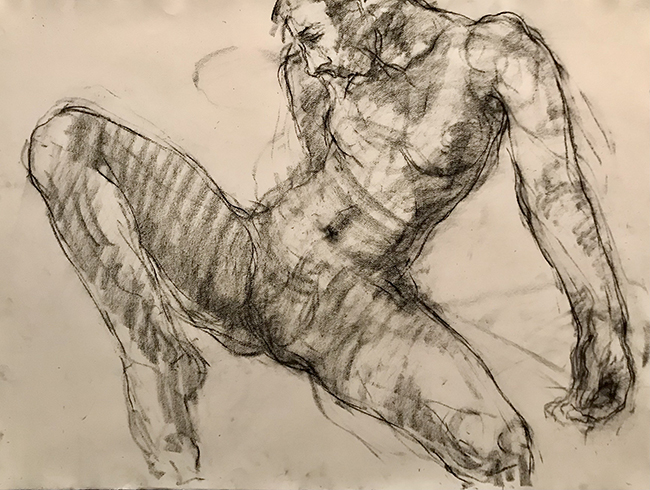Eddy Roos (b.1949) grew up in Amsterdam, surrounded by an environment that shaped his future as a sculptor. Across the street from his school, Berend Peter Hogenesch worked in his studio, which quickly became a second home for young Eddy. Spending hours there, he began creating portraits under Hogenesch’s guidance. Around 13 or 14, he expanded his artistic education by taking painting lessons with Dick van ‘t Wout and Paul Visser.

Van ‘t Wout’s approach to teaching was unconventional. He sent Eddy out into the city to draw from life—pubs, the Central Station, and even the abattoir became his classrooms. These excursions, alongside working in a factory to fund his education and housing, instilled a strong work ethic in him. Roos credits van ‘t Wout as his mentor, someone who challenged him to grow both technically and creatively.
At 15, Eddy’s artistic path led him to the Rijksnormaalschool, where sculptor Cor Hund and his wife, Willie Smit, took him under their wing. He honed his skills, sculpting heads that, to his regret, were often discarded back into the clay box. By evening, he would head to Hund’s additional classes at the Rijksacademie. Hund’s teaching was steeped in classical tradition, introducing Roos to the likes of Donatello and Phidias. While this exposure gave him a foundation in the “Classics,” Roos later reflected on how their rigid presentation felt stale, especially compared to Rodin’s more dynamic engagement with light and texture.
At the Rijksacademie, Eddy Roos found a new mentor in Professor Paul Gregoire, who emphasized philosophical depth in sculpture. Gregoire encouraged his students to focus on “truthfulness and arabesque,” steering them away from an over-reliance on form. Through Gregoire, Roos encountered the work of architects like Dom van der Laan and sculptors like Charles Despiau, Aristide Maillol, and Constantin Brâncuși. These artists shared a common resistance to the dramatic emotionality of Rodin, instead pursuing simplicity and purity in their work.
Yet, Eddy’s trajectory wasn’t strictly aligned with these ideas. The late 1960s brought a wave of democratization and experimentalism to the academy, and Roos was swept up in its energy. Influenced by Jacques Lipchitz, he explored ways to deform traditional figuration, blending abstraction with nature. This period of experimentation was driven by what Roos describes as the “Sturm und Drang” of the times—a spirit of pushing boundaries and challenging conventions.
Roos describes Lipchitz’s work as striking a balance between abstraction and emotional intensity. While artists like Brâncuși and Alberto Giacometti turned inward, distilling their forms to their essence, Lipchitz embraced outward expression through bold deformations. These contrasts deeply influenced Roos, who ultimately forged his own path. His conclusion from these experiences was clear: art is never static. “I never feel my images as finished. You are always in motion, in research,” he explains. It’s this ongoing inquiry that continues to drive him.
Eddy’s career is marked by his ability to integrate these varied influences into his practice. Whether through his early studies of classical forms, his explorations of abstraction, or his reflections on the role of light and emotion, his work is a testament to his lifelong curiosity. For Roos, sculpture is not about arriving at a final product but about the journey of discovery and creation.
Now, decades after those formative years in Amsterdam, Eddy Roos continues to engage with sculpture as both a craft and a philosophical pursuit. His work stands as a bridge between the traditions he grew up studying and the bold innovations he embraced later. At its core, his art embodies his belief in the value of constant motion—of remaining open to new ideas, challenges, and transformations.

